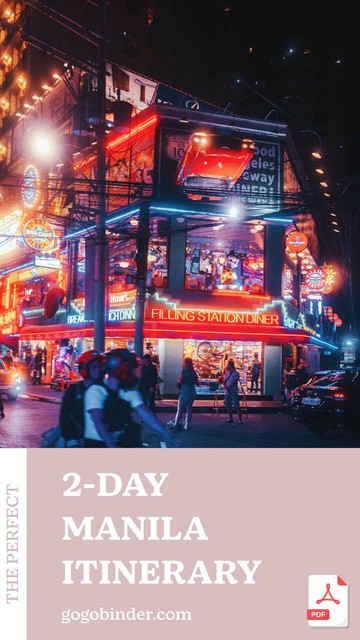Manila: A Journey Through History and Culture
Welcome to Manila, the vibrant capital of the Philippines. This comprehensive 2-day guide will take you through the city's rich colonial heritage, modern attractions, and cultural landmarks, perfect for first-time visitors.
Historical Overview
Manila's history spans centuries, from its pre-colonial origins to Spanish colonial rule and American influence. The city served as a crucial trading port and remains the Philippines' political, economic, and cultural center. Its diverse heritage is reflected in its architecture, cuisine, and traditions.
Iconic Landmarks
- Intramuros: The historic walled city featuring Fort Santiago, a symbol of Manila's Spanish colonial era and a testament to Philippine resilience.
- San Agustin Church: A UNESCO World Heritage site and the oldest stone church in the Philippines, showcasing baroque architecture.
- Rizal Park: A sprawling urban park dedicated to national hero Jose Rizal, featuring gardens, monuments, and cultural exhibitions.
Cultural Treasures
- National Museum of Fine Arts: Home to significant Filipino artworks, including Juan Luna's famous Spoliarium.
- Ayala Museum: A modern facility showcasing Philippine history and art through interactive exhibits.
- Cultural Center of the Philippines: The nation's premier venue for performing arts and cultural shows.
Charming Districts
- Binondo: The world's oldest Chinatown, famous for its authentic Chinese-Filipino cuisine and bustling markets.
- Malate: A historic district known for its nightlife, restaurants, and colonial architecture.
- Makati: The modern business district featuring upscale shopping and dining at Greenbelt Mall.
Manila Lifestyle
- Cuisine: A blend of Spanish, Chinese, and native influences; try local dishes at markets and food courts.
- Shopping: From modern malls to traditional markets like Divisoria.
- Entertainment: Experience Manila Bay's famous sunset at the Baywalk.
Green Spaces
- Paco Park: A historic circular park and former cemetery, now a popular venue for cultural events.
- Manila Botanical Garden: A peaceful retreat offering diverse plant species and walking trails.
Practical Travel Tips
- Transportation: Use grab taxis or the LRT/MRT system for convenience.
- Best Times to Visit: December to February for cooler, drier weather.
- Language: English is widely spoken; basic Tagalog phrases are appreciated.
- Safety: Exercise normal precautions and be aware of your surroundings.
2-Day Itinerary Highlights
Day 1: Rizal Park, National Museum of Fine Arts, San Agustin Church, Fort Santiago Day 2: Manila Ocean Park, Ayala Museum, Greenbelt Mall, Manila Baywalk
This guide presents a curated selection of over 30 locations, allowing you to customize your Manila experience. Each destination offers unique insights into the city's rich cultural tapestry and modern developments.
Manila is a city of contrasts where ancient walls stand alongside modern skyscrapers, and traditional markets thrive next to luxury malls. As you explore its diverse neighborhoods, sample local delicacies, and discover historical treasures, you'll understand why Manila continues to captivate visitors with its unique charm.
Let this dynamic metropolis surprise you with its warm hospitality, rich history, and vibrant culture. Enjoy your adventure in Manila!
